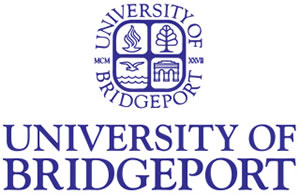Making the American Dream More Affordable
- By Karissa Peckham
- 06/01/16
 It’s the new American dream. With high school graduation on the
horizon, a student applies to colleges,
(hopefully) gets accepted into his or her
top-ranked school, selects a major, studies —
and, let’s be honest, socializes — his or her
way through four years of higher education in
an effort to graduate with a high GPA, land a
good job, earn a living and make it in the “real” world. One thing
that’s not factored into the plan? Struggling with student debt for
years to come.
It’s the new American dream. With high school graduation on the
horizon, a student applies to colleges,
(hopefully) gets accepted into his or her
top-ranked school, selects a major, studies —
and, let’s be honest, socializes — his or her
way through four years of higher education in
an effort to graduate with a high GPA, land a
good job, earn a living and make it in the “real” world. One thing
that’s not factored into the plan? Struggling with student debt for
years to come.
Though there are many things that play into choosing a
college — location, size, athletics, program of study, etc. — cost
remains one of the most important deciding factors. It’s no secret
that there is a giant student debt crisis sweeping the nation. Just
turn on any news station and you’ll hear about it. According to
the Federal Reserve, total education debt reached a whopping
$1.3 trillion in 2015 — and it’s only getting worse. This growing
concern is often forcing students to pick the cheapest path to a
college degree, as opposed to selecting the school that is the best
fit for them individually.
This means that a private education — typically carrying a
higher price tag than studying at a public university — can seem
out of reach for some, even though it boasts many benefits. Private
institutions tend to offer smaller class sizes, more personal attention
from full-time faculty, career-oriented courses, advanced
technology and research, and extensive learning resources.
Unfortunately, many students feel they aren’t able to even consider
a private school based solely on price.
However, even a public education is becoming increasingly
expensive. In Connecticut, a proposal to raise the cost of tuition at
state schools was recently approved, enhancing the debt issue for
in-state students. At the University of Bridgeport (UB) in Connecticut,
we understand the risk that higher education debt poses
to students. As a private institution, we are working to combat the
assumption that a private education automatically equates to more
dollar signs.
Neil Albert Salonen, the president at UB, has helped us to
find a way to address these issues by recently instituting the
Connecticut Promise. Under the Connecticut Promise program,
UB guarantees that Connecticut residents who are first-time,
full-time freshmen will pay no more than $18,500 out-of-pocket
for tuition, fees, and room and board after all scholarships and
grants have been applied. Prior to the launch of this program,
UB was already awarding scholarships and grants to roughly 96
percent of students. Now, with the addition of the Connecticut
Promise, UB is gifting students from Connecticut on average
an additional $4,500 in assistance to bring the educational cost
down even more. In-state commuting freshman not living on
UB’s campus are required to pay even less out-of-pocket — no
more than $12,000 a year.
The Connecticut Promise gives new freshmen students a
significant break in price at UB and allows them to take advantage
of the school’s state-of-the-art, career-focused curriculum,
including programs in the health sciences, design, education
and engineering. It also offers a diverse learning environment.
U.S. News & World Report ranked UB as one of the most diverse
universities in the country, giving students the opportunity to
learn alongside classmates from over 46 states and 80 countries.
In fact, Bridgeport has been named one of the country’s top
cities for students to attend college by the American Institute for
Economic Research (AIER).
Since the Connecticut Promise is in effect for incoming freshman
beginning Fall 2016, we have not yet determined the program’s
success in recruiting new students. However, the feedback
so far has been positive and encouraging. We have found potential
students and their families to be very receptive to the fact that the
University of Bridgeport is striving to make a private, first-rate
education as accessible and affordable as possible. Hopefully, more
schools will follow suit and we can begin to reverse the national
education debt crisis and ensure that more students are able to
achieve both a college degree and the new American Dream —
without the lingering financial burden.
This article originally appeared in the issue of .
About the Author
Karissa Peckham is the associate vice president for enrollment at the University of Bridgeport.